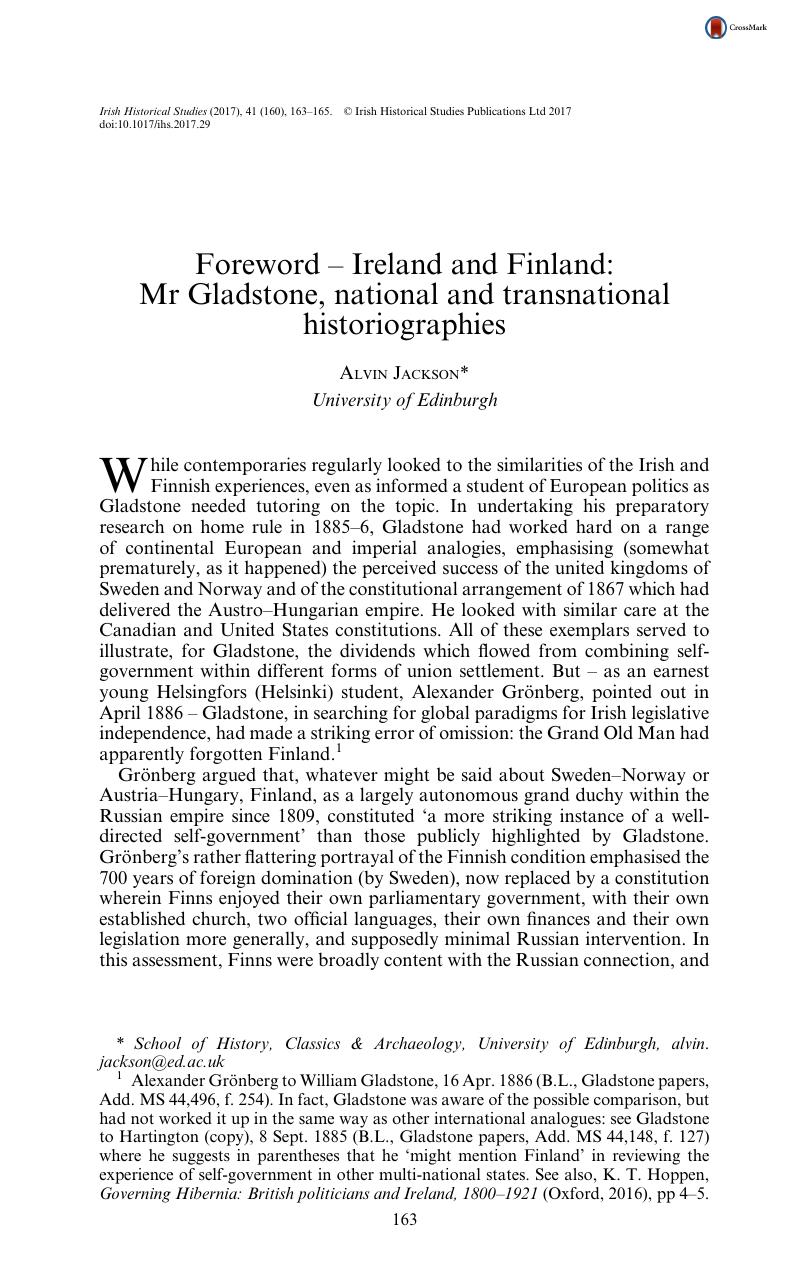No CrossRef data available.
Article contents
Foreword – Ireland and Finland: Mr Gladstone, national and transnational historiographies
Published online by Cambridge University Press: 08 November 2017
Abstract

- Type
- Other
- Information
- Irish Historical Studies , Volume 41 , Issue 160: Ireland and Finland, 1860–1930: Comparative and Transnational Histories , November 2017 , pp. 163 - 165
- Copyright
- © Irish Historical Studies Publications Ltd
References
1 Alexander Grönberg to William Gladstone, 16 Apr. 1886 (B.L., Gladstone papers, Add. MS 44,496, f. 254). In fact, Gladstone was aware of the possible comparison, but had not worked it up in the same way as other international analogues: see Gladstone to Hartington (copy), 8 Sept. 1885 (B.L., Gladstone papers, Add. MS 44,148, f. 127) where he suggests in parentheses that he ‘might mention Finland’ in reviewing the experience of self-government in other multi-national states. See also, Hoppen, K. T., Governing Hibernia: British politicians and Ireland, 1800–1921 (Oxford, 2016), pp 4–5 CrossRefGoogle Scholar.
2 hAnnracháin, Tadhg Ó, Catholic Europe, 1592–1648: centres and peripheries (Oxford, 2015)Google Scholar.
3 See, for example, ‘Ireland–Wales Research Network’ (http://www.ahrc.ac.uk/research/casestudies/ireland-walesresearchnetwork/) (30 Mar. 2017).
4 Lee’s, J. J. Ireland, 1912–85: politics and society (Cambridge, 1989)Google Scholar is distinguished in this and many other respects.
5 See, in particular, Heffernan, Brian (ed.), Life on the fringe? Ireland and Europe, 1800–1922 (Dublin, 2012)Google Scholar and the earlier Graham, Colin and Litvack, Leon (eds), Ireland and Europe in the nineteenth century (Dublin, 2006)Google Scholar.
6 Wright, Frank, Northern Ireland: a comparative analysis (Dublin, 1987)Google Scholar; Guelke, Adrian, Northern Ireland: the international perspective (Dublin, 1988)Google Scholar; Wilson, Tim, Frontiers of violence: conflict and identity in Ulster and Upper Silesia (Oxford, 2010)Google Scholar; Richard English’s recent work situates violence in Northern Ireland within a number of wider interpretative frameworks and analogies: see, for example, his Does terrorism work? (Oxford, 2016).


